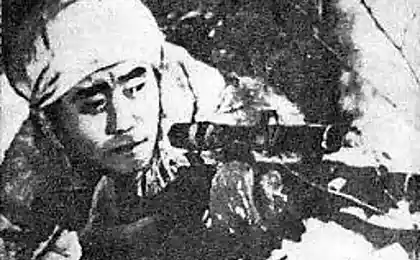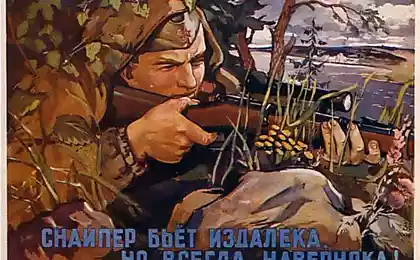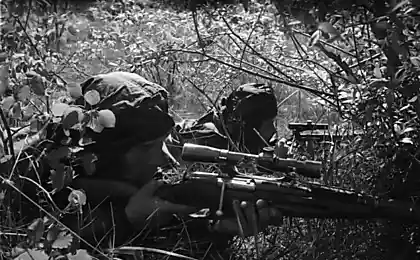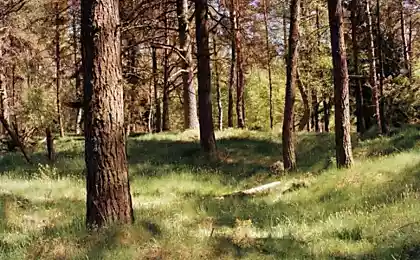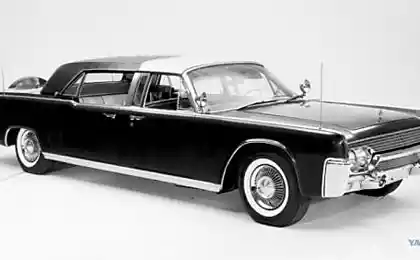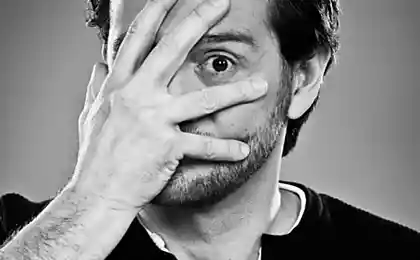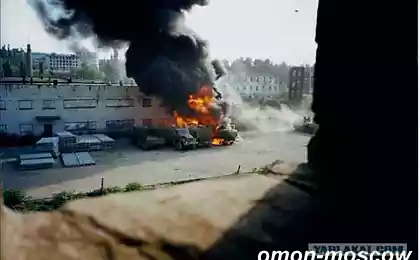778
Eleanor Roosevelt's Soviet sniper
Lyudmila Pavlichenko arrival in Washington, DC, in late 1942, did not cause much interest in the media. Legendary Soviet sniper in the form of modest standing next to his translator. Lyudmila did not know in English word, but her mission in the United States was clear: Lieutenant of the 25th Infantry Division of the Red Army, battle-hardened winner of numerous military awards, came on behalf of the Soviet command to enlist US support to "second front" in Europe. The aim of Josef Stalin was as fast as possible to convince the Western allies to send troops to the continent, divided the German forces and thereby ease their pressure on the Soviet Union.
Met with US President Franklin D. Roosevelt, Pavlichenko became the first Soviet citizen who visited the White House. First Lady Eleanor Roosevelt hastened to invite Ukrainian lieutenant in the tour of the country in which Ludmila could share with the Americans, their unique experience "war on women." Despite his young age (at the time of arrival in the United States she was only 25), four wounded Lyudmila has already been recognized as the label female sniper in the history of the USSR. She has been 309 fatal results, the victims of which were mainly German soldiers. Offer Eleanor Roosevelt Pavlicenco willingly accepted.
She graciously answered questions from American journalists. One day she was asked whether to allow Russian women to be painted on the front. Pavlicenco retired to the background: a few months ago, she was fighting on the front line on the outskirts of Sevastopol, where Soviet troops suffered heavy losses and were forced to surrender after 8 months of resistance. "There is no rule that forbids it, - said Lyudmila. - But who would ever think to powder his nose when around the war? »

New York Times dubbed her "girl-sniper", other newspapers reported "a complete lack of make-up to the unpainted lips" and "ease of her olive-green uniform».
In New York City Mayor welcomed Pavlichenko Fiorello La Guardia and the representative of the International Trade Union of leather and fur industry. According to one of the editions, the latter gave her a long coat from a raccoon that would look great anywhere in the opera ».
Over time, she began to answer questions more sharply, and the expression in her clear, dark eyes became stricter. One of the reporters dared to comment on the length of her skirt, claiming that it is complete. In Boston, history repeated itself: journalistic hand went to write: "Yesterday Pavlicenco destroyed a five-course breakfast. American kitchen it clearly came to taste ».
Soon Soviet sniper tired of sharp jabs press. "I wear shape with pride! - She told the magazine Time. - The Order of Lenin on my chest was washed in the blood. Obviously, much more important for the American presence under the form of silk underwear than the form itself, the true purpose of which they, by the way, only to learn ».
Malvina Lindsay, the leading column "fair sex" in the Washington Post in one of the editions devoted Pavlicenco a number of questions: why the Soviet sniper does not pay attention to their appearance? Really, according to the military philosophy, a successful warrior should not be proud of your appearance? Is Joan of Arc is not portrayed in glowing armor?
Over time, Lyudmila realized that stories about his youth, military career, about the devastating impact of the German occupiers in her homeland she literally mesmerizing listeners. Speaking across America, often in front of a thousandth audience Pavlicenco tirelessly urged Americans of the need to fight against the Nazis in Europe. By their example, she showed not only that women are able to fight, but also the fact that their presence in the war just need.
Lyudmila Pavlichenko was born in the town of White Church, near Kiev. Her father was a worker in a factory in St. Petersburg, and his mother - a teacher. In school, uncontrollable tomboy athletic boys never allowed himself to get around.
"When I heard the guy next door boasted of his exploits at the site, - she told the crowd - I decided to prove that girls are able to shoot well, and started a lot and train hard." Ludmila got a job at a weapons factory, in parallel continuing to engage in gunfire. In 1937, Pavlichenko joined the history faculty of the University of Kiev with the aim of becoming a teacher or scientist.
When the Soviet Union invaded the territory of the Germans and Romanians, Lyudmila Pavlichenko lived in Odessa. "The girls in the army did not take, and I had to go to all sorts of tricks to become a soldier, too." Lyudmila persistently advised to go to the nurse, but she did not agree. To ensure its ability to wield weapons, the Red Army staged an impromptu "test" not far from the hill that protected the Soviet soldiers. Ludmilla handed a gun and pointed at two Romanians, had worked with the Germans. "When I shot them both, I finally accepted." These two shots Pavlicenco not included in its list of victories - according to her, they were just trial.
Drilling Pavlichenko was immediately enlisted in the 25th Infantry Division named Vasily Chapayev, the famous Russian soldier and commander of the Red Army during the Civil War. Lyudmila was eager to get to the front. "I knew that my task is to shoot at people, - she said. - In theory, everything was clear to me, but I knew that in practice very different ».
On his first day at the front, she encountered the enemy face to face. Paralyzed by fear, Pavlichenko was unable to take up arms, Mosin rifle caliber 7, 62 mm with 4X telescope-type PE. Next to her was a young soldier whose life instantly took a German bullet. Lyudmila was shocked, shocked prompted her to action. "He was a wonderful happy little boy who was killed right before my eyes. Now, nothing could stop me ».
The next two victims keen eye Pavlichenko became German spies. Most of their deadly shots she made fighting on the territory of Odessa and Moldavia. It was there that Lyudmila "sentenced" to death 100 officers. The Germans continued to advance, and the regiment Pavlichenko was transferred to the Crimean peninsula in Sevastopol. Jobs that received Lyudmila became increasingly difficult. The most dangerous of these was the fight against the enemy sniper, when she had to fight with the enemy one by one. Pavlichenko never lost a duel. A total of fights that can last all day and all night (and day for three days), it killed 36 enemy snipers. Lyudmila told that the three-day standoff was one of the most strenuous tests in her life. It took incredible stamina and strength of mind to keep your concentration for 15-20 hours. "In the end, the German sharpshooter made one wrong step».
In Sevastopol, the enemy forces strikingly superior Soviet forces, and Paulichenka spent eight months in a cruiserweight bout. "We mowed the Nazis as ripe grain", - says Lyudmila. In May 1942, she was awarded the Military Council of the Red Army of the Southern Front for killing 257 enemies. After mentioning the list of distinguished, Pavlichenko, now a sergeant, promised: "There will be more».
Four wounded, suffered from a concussion, Lyudmila remained in service until they blew up a parking lot of their regiment. Injured by shrapnel in the face, Pavlichenko was transferred to another job boards: from now on, its mission has been training future snipers. By that time, it already knew about the Germans who tried to bribe her relentlessly through its speakers, "Lyudmila Pavlichenko, go to our side. We will give you a lot of chocolate and make you a German officer ».
When the Germans realized that bribery will not take it, they moved on to threats to break it into 309 pieces. The accuracy of the figures used shook Lyudmila "They even knew my expense!».
Was promoted Lieutenant Pavlichenko was withdrawn from the front line. Two months later, she was in the United States, where the newspapers scribbled on her "strong black shoes, which are known mud and blood of battle" and gave scant description of the daily routine of the Soviet sniper. As I said Lyudmila, extermination the Nazis did not cause her "complex emotions", the only thing she felt was a "hunter satisfaction" of the murder of a predatory animal.
One day, telling a reporter about their memories of the war and the impact on her life, Pavlichenko said: "Every living a healthy and easily kill a German woman, a child, and any person. It turns out, killing the Germans, I am saving lives ».
Time spent with Eleanor Roosevelt, apparently went Pavlicenco benefit. Already in Chicago, she could easily dismiss silly questions journalists about "manicures and perms." Not once, speaking to a crowd of thousands, it urged men to support a second front. "Gentlemen, I'm 25 years old and I have already killed 309 occupants. Do not you think, gentlemen, that you too long to hide behind my back? ". Hanging in the air for a moment, a sharp phrase Pavlicenco caused thunderous applause.
Wherever he went Lyudmila, she always received lots of gifts from senior fans (mostly rifles and pistols) and American singer Woody Guthrie even dedicated her song "Miss Pavlichenko." She went on to tell American women on gender equality in the Red Army. "Here I feel the subject of curiosity, character newspaper articles and anecdotes. In the Soviet Union, I accept, above all, as a citizen, a fighter, a true soldier of their country ».
On the way back to the USSR, Pavlicenco briefly visited Britain, where she continued to insist on the creation of a "second front." Returning home, she became a major, was awarded the title Hero of the Soviet Union (the highest award of the time), and her image appeared on stamps. Despite calls Pavlicenco for a "second front", Stalin had to wait another two years. By the time the Soviet Union had almost defeated the Nazis and the Allies in June 1944 has already stormed the beaches of Normandy.
Pavlicenco continued her studies at the University of Kiev, after the successful completion of which she received a degree in history. In 1957, 15 years after a trip to the United States, Eleanor Roosevelt, the former first lady has, arrived in Moscow. The Cold War was in full swing, and the Soviet authorities monitored her every move. After a long wait, Roosevelt finally got permission to meet with his old friend, Lyudmila Pavlichenko. Their meeting took place at home Lyudmila, two-room apartment in the city center. Initially, old friends talking, observing all the formalities, they dictated the position, but suddenly Pavlichenko, under the pretext of an unknown, delayed the guest bedroom and slammed the door. Alone Lyudmila gave his feelings: poluplacha or polusmeyas, she embraced her guest, thus showing how was glad to see her. Only then they can whisper, away from the prying eyes and ears, to recall the incredible trip to the United States, making them friends. VIA: topwar.ru
Source:
Met with US President Franklin D. Roosevelt, Pavlichenko became the first Soviet citizen who visited the White House. First Lady Eleanor Roosevelt hastened to invite Ukrainian lieutenant in the tour of the country in which Ludmila could share with the Americans, their unique experience "war on women." Despite his young age (at the time of arrival in the United States she was only 25), four wounded Lyudmila has already been recognized as the label female sniper in the history of the USSR. She has been 309 fatal results, the victims of which were mainly German soldiers. Offer Eleanor Roosevelt Pavlicenco willingly accepted.
She graciously answered questions from American journalists. One day she was asked whether to allow Russian women to be painted on the front. Pavlicenco retired to the background: a few months ago, she was fighting on the front line on the outskirts of Sevastopol, where Soviet troops suffered heavy losses and were forced to surrender after 8 months of resistance. "There is no rule that forbids it, - said Lyudmila. - But who would ever think to powder his nose when around the war? »

New York Times dubbed her "girl-sniper", other newspapers reported "a complete lack of make-up to the unpainted lips" and "ease of her olive-green uniform».
In New York City Mayor welcomed Pavlichenko Fiorello La Guardia and the representative of the International Trade Union of leather and fur industry. According to one of the editions, the latter gave her a long coat from a raccoon that would look great anywhere in the opera ».
Over time, she began to answer questions more sharply, and the expression in her clear, dark eyes became stricter. One of the reporters dared to comment on the length of her skirt, claiming that it is complete. In Boston, history repeated itself: journalistic hand went to write: "Yesterday Pavlicenco destroyed a five-course breakfast. American kitchen it clearly came to taste ».
Soon Soviet sniper tired of sharp jabs press. "I wear shape with pride! - She told the magazine Time. - The Order of Lenin on my chest was washed in the blood. Obviously, much more important for the American presence under the form of silk underwear than the form itself, the true purpose of which they, by the way, only to learn ».
Malvina Lindsay, the leading column "fair sex" in the Washington Post in one of the editions devoted Pavlicenco a number of questions: why the Soviet sniper does not pay attention to their appearance? Really, according to the military philosophy, a successful warrior should not be proud of your appearance? Is Joan of Arc is not portrayed in glowing armor?
Over time, Lyudmila realized that stories about his youth, military career, about the devastating impact of the German occupiers in her homeland she literally mesmerizing listeners. Speaking across America, often in front of a thousandth audience Pavlicenco tirelessly urged Americans of the need to fight against the Nazis in Europe. By their example, she showed not only that women are able to fight, but also the fact that their presence in the war just need.
Lyudmila Pavlichenko was born in the town of White Church, near Kiev. Her father was a worker in a factory in St. Petersburg, and his mother - a teacher. In school, uncontrollable tomboy athletic boys never allowed himself to get around.
"When I heard the guy next door boasted of his exploits at the site, - she told the crowd - I decided to prove that girls are able to shoot well, and started a lot and train hard." Ludmila got a job at a weapons factory, in parallel continuing to engage in gunfire. In 1937, Pavlichenko joined the history faculty of the University of Kiev with the aim of becoming a teacher or scientist.
When the Soviet Union invaded the territory of the Germans and Romanians, Lyudmila Pavlichenko lived in Odessa. "The girls in the army did not take, and I had to go to all sorts of tricks to become a soldier, too." Lyudmila persistently advised to go to the nurse, but she did not agree. To ensure its ability to wield weapons, the Red Army staged an impromptu "test" not far from the hill that protected the Soviet soldiers. Ludmilla handed a gun and pointed at two Romanians, had worked with the Germans. "When I shot them both, I finally accepted." These two shots Pavlicenco not included in its list of victories - according to her, they were just trial.
Drilling Pavlichenko was immediately enlisted in the 25th Infantry Division named Vasily Chapayev, the famous Russian soldier and commander of the Red Army during the Civil War. Lyudmila was eager to get to the front. "I knew that my task is to shoot at people, - she said. - In theory, everything was clear to me, but I knew that in practice very different ».
On his first day at the front, she encountered the enemy face to face. Paralyzed by fear, Pavlichenko was unable to take up arms, Mosin rifle caliber 7, 62 mm with 4X telescope-type PE. Next to her was a young soldier whose life instantly took a German bullet. Lyudmila was shocked, shocked prompted her to action. "He was a wonderful happy little boy who was killed right before my eyes. Now, nothing could stop me ».
The next two victims keen eye Pavlichenko became German spies. Most of their deadly shots she made fighting on the territory of Odessa and Moldavia. It was there that Lyudmila "sentenced" to death 100 officers. The Germans continued to advance, and the regiment Pavlichenko was transferred to the Crimean peninsula in Sevastopol. Jobs that received Lyudmila became increasingly difficult. The most dangerous of these was the fight against the enemy sniper, when she had to fight with the enemy one by one. Pavlichenko never lost a duel. A total of fights that can last all day and all night (and day for three days), it killed 36 enemy snipers. Lyudmila told that the three-day standoff was one of the most strenuous tests in her life. It took incredible stamina and strength of mind to keep your concentration for 15-20 hours. "In the end, the German sharpshooter made one wrong step».
In Sevastopol, the enemy forces strikingly superior Soviet forces, and Paulichenka spent eight months in a cruiserweight bout. "We mowed the Nazis as ripe grain", - says Lyudmila. In May 1942, she was awarded the Military Council of the Red Army of the Southern Front for killing 257 enemies. After mentioning the list of distinguished, Pavlichenko, now a sergeant, promised: "There will be more».
Four wounded, suffered from a concussion, Lyudmila remained in service until they blew up a parking lot of their regiment. Injured by shrapnel in the face, Pavlichenko was transferred to another job boards: from now on, its mission has been training future snipers. By that time, it already knew about the Germans who tried to bribe her relentlessly through its speakers, "Lyudmila Pavlichenko, go to our side. We will give you a lot of chocolate and make you a German officer ».
When the Germans realized that bribery will not take it, they moved on to threats to break it into 309 pieces. The accuracy of the figures used shook Lyudmila "They even knew my expense!».
Was promoted Lieutenant Pavlichenko was withdrawn from the front line. Two months later, she was in the United States, where the newspapers scribbled on her "strong black shoes, which are known mud and blood of battle" and gave scant description of the daily routine of the Soviet sniper. As I said Lyudmila, extermination the Nazis did not cause her "complex emotions", the only thing she felt was a "hunter satisfaction" of the murder of a predatory animal.
One day, telling a reporter about their memories of the war and the impact on her life, Pavlichenko said: "Every living a healthy and easily kill a German woman, a child, and any person. It turns out, killing the Germans, I am saving lives ».
Time spent with Eleanor Roosevelt, apparently went Pavlicenco benefit. Already in Chicago, she could easily dismiss silly questions journalists about "manicures and perms." Not once, speaking to a crowd of thousands, it urged men to support a second front. "Gentlemen, I'm 25 years old and I have already killed 309 occupants. Do not you think, gentlemen, that you too long to hide behind my back? ". Hanging in the air for a moment, a sharp phrase Pavlicenco caused thunderous applause.
Wherever he went Lyudmila, she always received lots of gifts from senior fans (mostly rifles and pistols) and American singer Woody Guthrie even dedicated her song "Miss Pavlichenko." She went on to tell American women on gender equality in the Red Army. "Here I feel the subject of curiosity, character newspaper articles and anecdotes. In the Soviet Union, I accept, above all, as a citizen, a fighter, a true soldier of their country ».
On the way back to the USSR, Pavlicenco briefly visited Britain, where she continued to insist on the creation of a "second front." Returning home, she became a major, was awarded the title Hero of the Soviet Union (the highest award of the time), and her image appeared on stamps. Despite calls Pavlicenco for a "second front", Stalin had to wait another two years. By the time the Soviet Union had almost defeated the Nazis and the Allies in June 1944 has already stormed the beaches of Normandy.
Pavlicenco continued her studies at the University of Kiev, after the successful completion of which she received a degree in history. In 1957, 15 years after a trip to the United States, Eleanor Roosevelt, the former first lady has, arrived in Moscow. The Cold War was in full swing, and the Soviet authorities monitored her every move. After a long wait, Roosevelt finally got permission to meet with his old friend, Lyudmila Pavlichenko. Their meeting took place at home Lyudmila, two-room apartment in the city center. Initially, old friends talking, observing all the formalities, they dictated the position, but suddenly Pavlichenko, under the pretext of an unknown, delayed the guest bedroom and slammed the door. Alone Lyudmila gave his feelings: poluplacha or polusmeyas, she embraced her guest, thus showing how was glad to see her. Only then they can whisper, away from the prying eyes and ears, to recall the incredible trip to the United States, making them friends. VIA: topwar.ru
Source:

